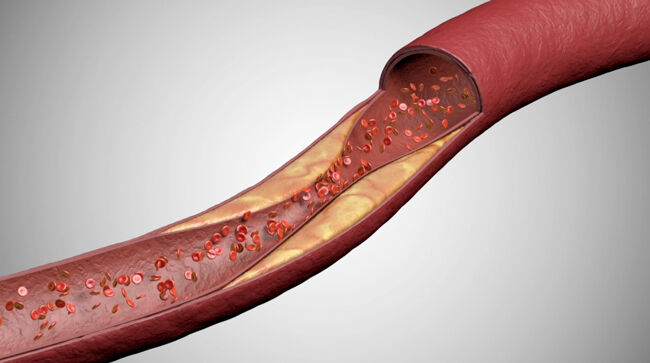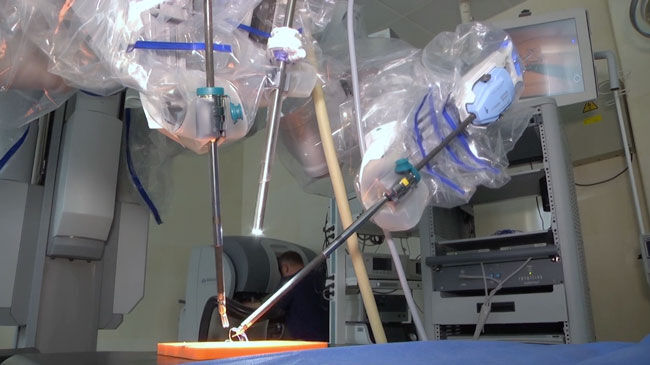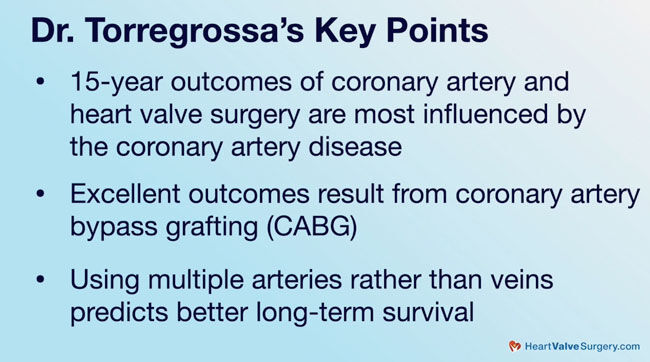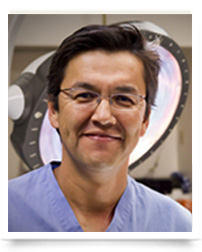Surgeon Q&A: Coronary Artery Bypass Grafting and Heart Valve Surgery with Dr. Gianluca Torregrossa
Written By: Allison DeMajistre, BSN, RN, CCRN
Medical Expert: Gianluca Torregrossa, MD, Director of Robotic and Revascularization Surgery, Main Line Health
Reviewed By: Adam Pick, Patient Advocate, Author, and Website Founder
Published: June 18, 2024
A diagnosis of heart valve disease and coronary artery disease together is complicated. According to the Centers for Disease Control & Prevention, coronary artery disease caused 375,476 deaths in the United States in 2021. It continues to be the most common type of heart disease and results in nearly one million heart attacks every year.
Specific to this patient concern, we recently received a great question from Jeremy, who asked, “I’ve been diagnosed with mitral valve disease and plaque build-up in my arteries. I’ve learned a lot about mitral valve surgery on your website. What should I know about coronary artery bypass grafts? Are they all the same?”
To answer Jeremy’s question, we met with Dr. Gianluca Torregrossa at the Annual Meeting of The Society of Thoracic Surgeons. Dr. Torregrossa is the Director of Robotic and Revascularization Surgery at Main Line Health in Wynnewood, Pennsylvania. His extensive experience in the field makes him the perfect candidate to answer Jeremy’s question.
Key Learnings About Coronary Artery Bypass Grafting and Heart Valve Surgery
Here are the key insights shared by Dr. Torregrossa about coronary artery and heart valve disease:
- Surgical outcomes are often influenced by coronary artery disease rather than valve surgery. “In the process of any type of valve surgery, your surgeon will always try to do some tests to understand if the coronary arteries, pipes, and highways that bring blood and nutrition to the heart present plaque,” Dr. Torregrossa told us. “When we discover that there is plaque present, it’s very important to step back and understand that the 15-year outcomes of the surgery are most likely influenced by coronary artery disease rather than the valve surgery. It means coronary artery disease takes the first position in the acuity and the problem of the heart at the time.”

- Coronary artery bypass grafting is often the best treatment for coronary artery disease. Dr. Torregrossa said, “The positive news is that there is an excellent treatment for coronary artery disease, and the best treatment that has been tested throughout the last 40, 50 years is coronary artery bypass grafting.” According to Dr. Torregrossa, assessing the location of the plaque within the coronary arteries will determine the best treatment for the obstruction the plaque is causing. “Most of the time, coronary artery bypass grafting is the solution for it,” he said. “In certain situations, if the plaque is not in the main arteries, we can also consider a percutaneous coronary intervention or a stent.”
- Dr. Torregrossa currently uses innovative practices when treating coronary artery disease. Dr. Torregrossa believes that patients should know what type of graft or conduit their surgeon will use during a bypass or combined valve and bypass surgery. “What we have learned is that using multiple arteries rather than veins taken from the leg is a predictor for better long-term outcomes,” said Dr. Torregrossa. “Arteries are used in ten percent of the overall volume of bypass surgery in the United States.” He also believes that going to the centers that use multiple arteries during bypass surgery offers the best treatment for coronary artery disease.

- Minimally invasive and robotic approaches versus a sternotomy for combined coronary bypass grafting and heart valve surgery. Dr. Torregrossa said, “In general, coronary artery bypass grafting in combination with valve surgery needs a sternotomy approach, so a front entrance.” In his experience, patients often research specialists who perform minimally-invasive valve surgery and are shocked and frustrated when they discover they have coronary artery disease and will require a sternotomy rather than a less invasive approach. “It’s important for patients to know that the concept of offering a sternotomy in a combined procedure of valve and bypass has the safest and best long-term outcome,” said Dr. Torregrossa. “I love minimally invasive surgery. I’m passionate about robotic surgery, but I always tell my patients that when faced with a combined coronary artery disease and valve surgery, the best way to treat this problem is through a conventional sternotomy.”

- There are exceptions to the sternal approach in some cases. Dr. Torregrossa assures patients that the long-term outcomes of a sternal approach are excellent. “Yes, the immediate post-op might be a little different, but the long-term outcomes are great,” he said. “There are two other options that can be considered in a specialized center, one of which is considering percutaneous coronary interventions, so placing a stent before the heart surgery and still perform the valve surgery in a minimally invasive approach. This is safe when the problems in the coronary arteries are not in the major, critical portion of the coronary trees. They’re not at the root of the trees that bring blood to the rest of the heart.” Dr. Torregrossa also told us that a combination of a robotic bypass and a robotic mitral valve is possible in very few circumstances. “It’s a very few cases and very few circumstances in which we can imagine that should be done,” he said. “The standard, most appropriate way, is a full sternotomy, a standard approach to guarantee an excellent long-term outcome.”
Thanks Dr. Gianluca Torregrossa!
On behalf of Jeremy, our patients at HeartValveSurgery.com, and patients all over the world, thank you, Dr. Torregrossa, for everything you and your team are doing at Main Line Health in Wynnewood, Pennsylvania!
Related links:
Keep on tickin!
Adam
P.S. For the deaf and hard-of-hearing members of our patient community, I have provided a transcript of this interview with Dr. Torregrossa below.
Video Transcript:
Adam Pick: Hi, everybody, it’s Adam with heartvalvesurgery.com. We’re in San Antonio at the annual meeting of The Society of Thoracic Surgeons. I am thrilled to be joined by Dr. Gianluca Torregrossa, who is the director of robotic and revascularization surgery at Main Line Health in Wynnewood, Pennsylvania. Dr. Torregrossa it is great to see you again. Thanks for being here today.
Dr. Torregrossa: Thank you so much. Thank you for having me here and thank you for everything you guys are doing for patients and creating this platform where patients and doctors can meet and where patients can find appropriate information about their heart valve disease.
Adam Pick: Yeah, and so let’s talk about that. We’re here at the conference, a lot of great meetings going on, presentations, and we’re also getting patient questions while we’re here. This one came in from Jeremy and he asks, “I’ve been diagnosed with mitral valve disease and plaque buildup in my arteries. I’ve learned a lot about mitral valve surgery on your website. What should I know about coronary artery bypass grafts? Are they all the same?”
Dr. Torregrossa: Great question, Jeremy, and an excellent really problem. In the process of any type of valve surgery, your surgeon will always try to do some tests to understand if the coronary arteries, if the pipes, the highway that brings blood and nutrition to the heart present plaque. When we discover that there is plaque present, it’s very important to step back and understand that the 15 years outcomes of the surgery are most likely influenced by the coronary artery disease rather than the valve surgery. It means coronary artery disease takes almost the first position in the acuity and in the problem of the heart at the time. The positive news is that there is an excellent treatment for coronary artery disease and the best treatment that has been tested throughout the last 40, 50 years is coronary artery bypass grafting. What patients should know is that after the proper assessment of the presence of this plaque, the patients and the surgeons should understand where these problems is in the coronary arteries and understand what is the best treatment for that plaque for that obstruction. Most of the time, coronary artery bypass grafting is the solution for it. In certain situations, if the plaque is not in the main arteries, we can also consider a percutaneous coronary intervention or a stat.
Adam Pick: Dr. Torregrossa, fascinating. I’ve got to ask you a question. I’m sure Jeremy is wondering and other patients in our community, are there any innovations you’re using in your practice to treat coronary artery disease?
Dr. Torregrossa: Great question. Every patient should know before getting into a bypass surgery or a combined valve and bypass surgery is what type of graft, what type of conduit my surgeon will use to bypass my vision. What we have learned is that using multiple arteries rather than veins taken from the leg is a predictor for better long-term survival. Using an artery to perform this bypass guarantees excellent long-term outcomes. Arteries are used in currently 10% of the overall volume of bypass surgery done in the United States. If you go to one of those centers that really take coronary with passion, they really care about coronary artery disease, you can have as a patient the best type of treatment for your coronary artery disease, that is, a bypass done with multiple arteries.
Adam Pick: Dr. Torregrossa, I’ve got to ask. I know you do a lot of work minimally invasive; is this something that can be done using a robot or other ports?
Dr. Torregrossa: Again, in general the coronary artery bypass grafting in combination with valve needs what we call a sternotomy approach, so a front entrance. This is always shocking and I’ve seen in a lot of my patients to feel almost a feel of frustration. They did a lot of homework to understand which specialist to go for their minimally invasive valve, a transcatheter, a robotic mitral and minimally invasive aortic valve, and suddenly they get discovered that they have coronary artery disease and the surgeon is telling them they need to have a sternotomy. It’s important for patients to know that the concept of offering a sternotomy in a combined procedure of valve and bypass is the safest and best long-term outcome. I love minimally invasive, I’m a bit passionate for robotic surgery, but I always tell my patients that in front of a combined coronary artery disease and valve surgery, the best way to treat this problem is through a conventional sternotomy.
The long-term outcomes are excellent. Yes, the immediate post-op might be a little bit different but the long-term outcomes are great. There are two other options that can be potentially considered in a specialized center, one of which is considering percutaneous coronary interventions, so placing stent before the heart surgery and perform still the heart surgery in a minimally invasive approach. This is safe when the problems on the coronary artery are not in the major critical portion of the coronary trees. They’re not at the root of the trees that brings blood to all of the heart. The second important thing is the combination of a robotic bypass and a robotic mitral valve are very ductile. It’s a very few cases and very few circumstances in which we can imagine that that should be done. The standard, a must appropriate way, is a full sternotomy, a standard approach to guarantee excellent long-term.
Adam Pick: Jeremy, I hope that helped you. Dr. Torregrossa, on behalf of the patients at heartvalvesurgery.com, patients all over the world, thanks to you for everything you’re doing at Main Line Health in Wynnewood, Pennsylvania. Thanks so much for being with me today.
Dr. Torregrossa: Thank you so much.





